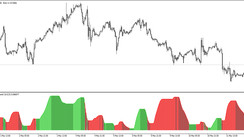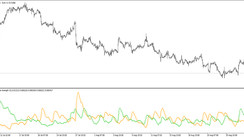The Essentials of Exiting a Trade
In the world of trading, entry points often steal the limelight, but it's the exit strategy that truly determines the success or failure of a trade. One could easily enter a trade, but deciding when and where to exit—that's where the challenge lies. Exits can be planned based on certain conditions, a trailing stop-loss order, or a specific profit target. A profit target, to put it simply, is a predefined price level at which you'll close the trade.
Take an instance where you acquire a stock at $10.25 with a profit target of $10.35; you would then set an order to sell at that price. Once the price hits that level, the trade is completed. It's important to note that profit targets come with their pros and cons and can be set based on various strategies.
The Rationale Behind Profit Targets
Before diving into a trade, outlining an exit strategy allows for calculating a risk/reward ratio. This ratio is as significant as the profit target and the stop-loss. While a stop-loss controls the potential loss on a trade, the profit target identifies potential gains. In an ideal scenario, your potential gains should overshadow the risks.
Predicting the outcome of individual trades is impossible, but over a series of trades, an overall profit can be expected if gains from winning trades outstrip losses from losing ones. For instance, in forex day trading, if winning trades average 11 pips and losing trades average 6 pips, about 40% of our trades need to be successful to turn a profit.
Trading with a profit target can help evaluate if a trade is worth the risk. If the potential profit doesn't justify the risk, it's best to refrain from the trade. In essence, establishing a profit target assists in filtering out less advantageous trades.
Weighing the Benefits and Drawbacks of Profit Targets
There are numerous advantages to trading with profit targets, some of which we've discussed, but there are also potential downsides.
The upsides of using profit targets include:
- Establishing a stop-loss and a profit target offers a known risk/reward ratio before placing the trade.
- Profit targets can be derived from objective data, such as price chart tendencies.
- Profit targets, when based on rational and objective analysis, can reduce emotional involvement in trading.
- When a profit target is achieved, the trader reaps the rewards of a move they forecasted, netting a reasonable profit.
On the other hand, potential pitfalls of using profit targets include:
- Setting profit targets requires skill and should not be random, driven by fear or hope.
- Profit targets might not be reached. The price may reverse course before hitting the target, leading to a stop-loss.
- Profit targets may significantly be surpassed, limiting further profit potential.
Remember that whether or not to use a profit target is ultimately a trader's personal choice.
Strategizing Profit Target Placement
Placement of a profit target is a delicate balancing act. A target that's too close or too far could negatively impact the trade. Here are a few approaches to consider:
- Fixed Reward:Risk Profit Targets: These are set based on a predetermined reward:risk ratio. Depending on your entry point and stop-loss level, your profit target can be a multiple of your risk.
- Measured Move Profit Targets: Chart patterns can be used to predict how far the price could move. The price might not always move as anticipated but measured moves offer an estimate.
- Market Tendency and Price Action Analysis Profit Targets: This method requires the most work, but can offer consistent results if the trader can accurately identify market trends.board-certified.blogspot.com/2023/05/smart-exits-why-and-how-to-set-profit-targets-in-trading.html
Why Establish a Profit Target in Trading?
Every trader must exit a position at some point, with the nature of that exit ultimately defining your gain or loss. Position closure may be dictated by the development of specific conditions, the activation of a trailing stop-loss order, or the realization of a profit target.
Consider a scenario where you purchase a stock at $10.25 and set a profit target of $10.35, thereby creating an order to sell at this price point. The moment the price touches this point, your position closes. The idea of profit targets carries its own pros and cons, with several strategies being available for determining optimal placement.
The Science Behind Trading with a Profit Target
Setting a termination point before initiating a trade enables you to calculate the risk/reward ratio of the trade. Here, the stop-loss limit and profit target are equally important, with the former representing potential losses and the latter potential gains. The goal is to have a potential gain that outweighs the potential risk.
Even though we cannot determine in advance which trades will succeed and which will fail, our overall profit over many trades is more likely to be positive if our winning trades are larger than our losing trades. Take the case of day trading forex, where our winning trades average 11 pips and our losing trades average 6 pips. In such a scenario, we need to succeed in only about 40% of our trades to make an overall profit.
By setting a profit target, we can evaluate whether a trade is worth taking. If the potential gain does not sufficiently offset the risk, it's advisable to refrain from the trade. This shows how profit targets can help eliminate undesirable trades.
The Pros and Cons of Using Profit Targets
While there are numerous advantages to setting profit targets, there are also potential downsides.
The primary benefits include:
- By setting a stop-loss limit and a profit target, you can ascertain the risk/reward profile of a trade before you initiate it. This information allows you to determine whether or not to proceed with the trade.
- Profit targets can be based on empirical data, such as recurring price chart patterns.
- Profit targets based on sound, objective analysis can aid in removing some emotional elements from trading decisions, as the trader knows their profit target is well placed according to the chart they are examining.
- If the profit target is achieved, the trader has successfully forecasted a move and will receive a reasonable return on the trade. Provided the trader was comfortable with the risk/reward profile before entering the trade, they should be satisfied with the outcome, irrespective of a win or loss. In either situation, the trade was accepted because the potential upside outweighed the potential downside.
However, there are potential downsides to using profit targets:
- Setting profit targets requires skill, as they should not be randomly placed based on emotions such as fear (too near) or hope (too far). We will cover this in more detail later.
- Profit targets may not be achieved. The price might approach the profit target before reversing and triggering the stop-loss instead. If you routinely set your profit targets too far away, your winning trade count may be low. Conversely, if your targets are too near, your compensation for the risk taken may be inadequate.
- Profit targets may be significantly exceeded. Once a profit target is set, any further potential profit (beyond the target price) is surrendered.





